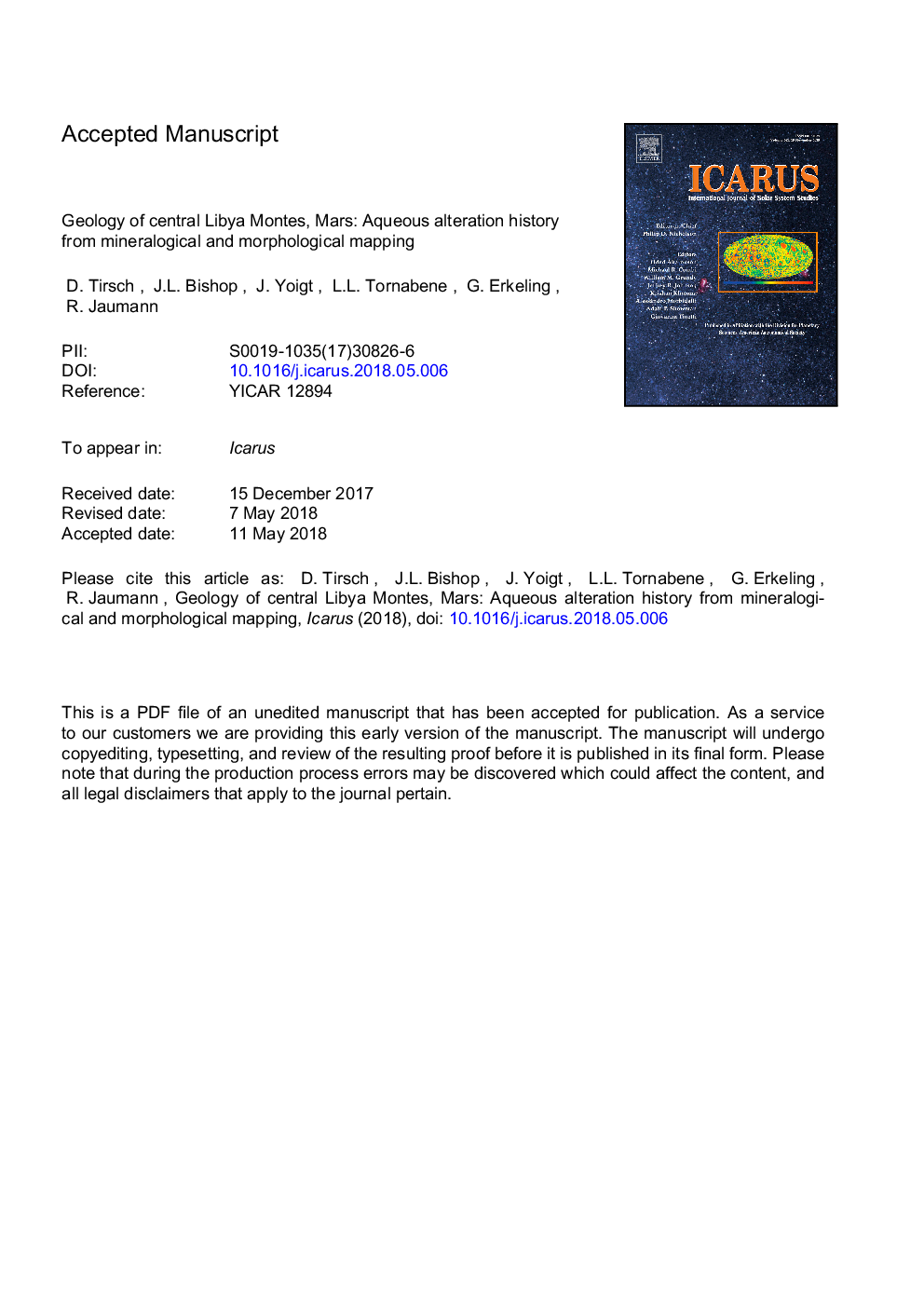| Article ID | Journal | Published Year | Pages | File Type |
|---|---|---|---|---|
| 8133771 | Icarus | 2018 | 73 Pages |
Abstract
We analyze the emplacement chronology and aqueous alteration history of distinctive mineral assemblages and related geomorphic units near Hashir and Bradbury impact craters located within the Libya Montes, which are part of the southern rim of the Isidis Basin on Mars. We derive our results from a spectro-morphological mapping project that combines spectral detections from CRISM near-infrared imagery with geomorphology and topography from HRSC, CTX, and HiRISE imagery. Through this combination of data sets, we were able to use the morphology associated with specific mineral detections to extrapolate the possible extent of the units hosting these compositions. We characterize multiple units consistent with formation through volcanic, impact, hydrothermal, lacustrine and evaporative processes. Altered pyroxene-bearing basement rocks are unconformably overlain by an olivine-rich unit, which is in turn covered by a pyroxene-bearing capping unit. Aqueously altered outcrops identified here include nontronite, saponite, beidellite, opal, and dolomite. The diversity of mineral assemblages suggests that the nature of aqueous alteration at Libya Montes varied in space and time. This mineralogy together with geologic features shows a transition from Noachian aged impact-induced hydrothermal alteration and the alteration of Noachian bedrock by neutral to slightly basic waters via Hesperian aged volcanic emplacements and evaporative processes in lacustrine environments followed by Amazonian resurfacing in the form of aeolian erosion.
Keywords
Related Topics
Physical Sciences and Engineering
Earth and Planetary Sciences
Space and Planetary Science
Authors
D. Tirsch, J.L. Bishop, J.R.C. Voigt, L.L. Tornabene, G. Erkeling, R. Jaumann,
